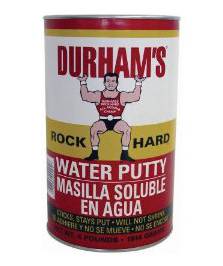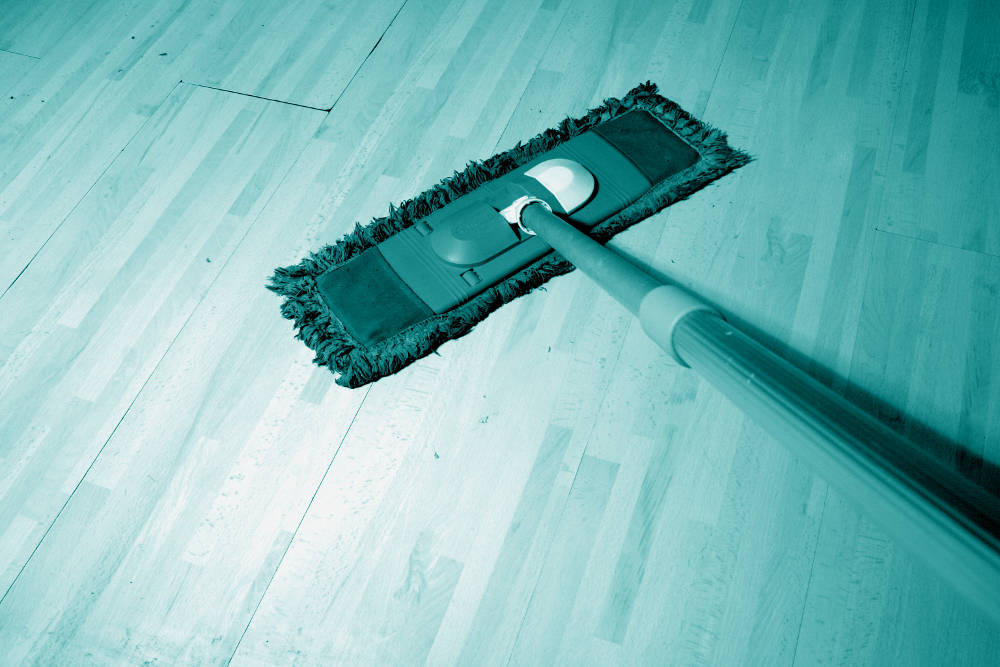Wood putty and wood filler are two types of fillers that are often used interchangeably with one another. Although they are very similar and are both used to fill holes in wooden furniture, there are significant differences between the two. Knowing these differences is important to ensure a proper repair.
Wood Putty vs Wood Filler: Wood Putty
Wood putty, also known as plastic wood, is a common type of wood filler that is applied to wood only after it has been stained and varnished. This is because the putty may contain chemicals that are harmful to raw wood.
Wood putty is oil-based and made up of boiled linseed oil, calcium carbonate, and universal colorants. It’s a plastic resin that has the texture of soft clay when wet and hardens to a semi-hard finish when left to dry. Any oil residue left after the putty dries should be washed away. Once the putty has completely dried, it should be sanded smooth.
Wood putty comes in many different colors, but its drying time is extremely slow, so lighter colors may end up collecting dust and appearing darker when dried. Wood putty can be bought pre-dyed or you can use dye pigments to dye it yourself. Although its properties and drying time limit its uses, wood putty is more cost-effective than wood fillers because it lasts longer in its container. Putty that has dried up in the container can be restored by adding a small amount of acetone.
Like wood filler, wood putty is generally used to fill up small cracks, holes, and other small imperfections on wooden furniture. It has adhesive properties making it a great masking glue. It can be used on stained woodworks or to fill holes between paint and oil-based polyurethane coats. Obviously, wood putty used on finished furniture should be dyed the same color as the furniture to truly be ‘hidden.’ However, if working with unfinished wood, the putty color is not very important.
Advantages/Disadvantages Over Wood Filler
– Longer drying time
– Only works with finishes that are oil-based
– Limited uses
– More cost-effective
– Has adhesive properties
Wood Filler vs Wood Putty: Wood Filler
 Wood filler, which is also called wood grain filler, is applied to the wood before stains and varnishes. It is a putty-like material that is made up of different materials such as clay, polyurethane, epoxy, lacquer, or latex. Wood filler is often made for a specific purpose, so it can be used on finishes other than only oil-based ones. They usually have a neutral color but dyes and tints can be used to match the exact color of your wood.
Wood filler, which is also called wood grain filler, is applied to the wood before stains and varnishes. It is a putty-like material that is made up of different materials such as clay, polyurethane, epoxy, lacquer, or latex. Wood filler is often made for a specific purpose, so it can be used on finishes other than only oil-based ones. They usually have a neutral color but dyes and tints can be used to match the exact color of your wood.
- Stainable Wood Filler – Has real wood fibers and works well on small holes and cracks.
It is typically used to fill large gaps and holes in open-grained woods. Like putty, it has the texture of soft clay when wet and dries to a semi-hard finish. It takes 10 minutes for filler to start to dry but around 24 hours to dry completely. Sawdust and other kinds of fillers are sometimes mixed with wood fillers in order to achieve a natural wood look.
There are many different kinds of wood fillers, the most common being the latex filler. This kind of wood filler is water-based, and is therefore easy to clean up. It also mixes well with additives such as dye pigments. Latex filler is best used to seal holes and cracks in unfinished wood furniture.
Polyurethane filler is best used on pre-finished furniture because it contains a polyurethane seal that can protect the furniture. Pre-lacquered surfaces should only be filled with lacquer filler because this type of filler is the only one that will adhere.
Epoxy filler should only be used on unfinished wood. It requires heavy sanding, which may ruin any finish applied to your furniture. After application, wood fillers usually need to be covered by another seal because they tend to dry and crumble. Unlike wood putty, wood fillers do not have any adhesive properties.
Advantages/Disadvantages Over Wood Putty
– No adhesive properties
– Faster drying time
– Less limited uses
– Needs to be covered by another seal
Wood putty and wood fillers are two similar but very different materials used in woodworking. Wood putty is a slow-drying, oil-based material that has limited uses while wood filler can be used on many types of surfaces. Although the latter has a faster drying time, it doesn’t have the adhesive properties that wood putty has.



What wood filler do I use on pine that has been recently treated with boiled linseed oil
How big is the void that you are trying to fill? This wood filler should work fine.
If you have some spare pine, try applying some wood filler to a piece of the pinewood stained with boiled linseed oil and see how it looks. Apply some pine sawdust with the wood filler to get that right look. Let it dry and then apply your linseed oil.
with request to the above heading i will like to make an enquiry on the various types of
putty filler,paints and also resins that you have and their sizes.
RGDS
Mr.Walker
I need something to fill in upholstery nail holes on the front edge of a chair seat that will be receiving more upholstery nails. Is there a product that will dry as hard as the wood and allow me to nail into again? Thanks in advance for your help.